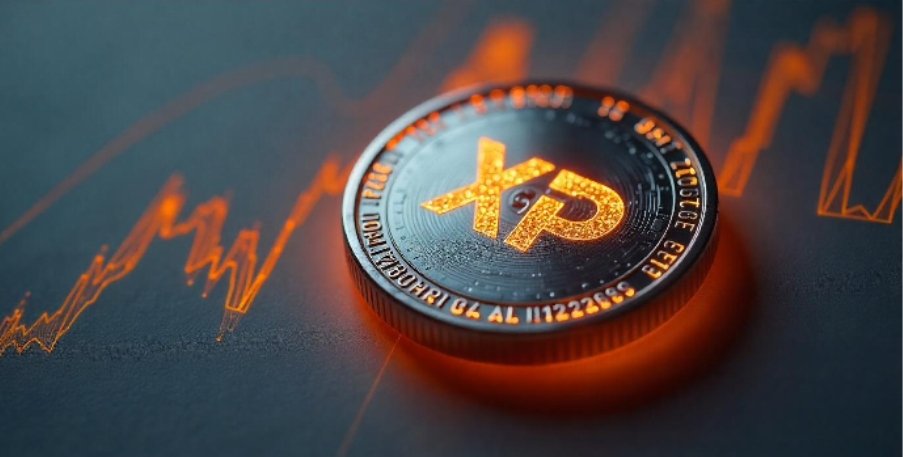
XRP is a widely recognized digital asset that facilitates seamless international transactions with near-instant settlement and minimal transaction costs. As one of the top cryptocurrencies by market capitalization, XRP continues to play a crucial role in digital finance. With over 45 billion tokens circulating out of a total supply of 100 billion, Ripple, the company behind XRP, has escrowed 55 billion tokens to maintain stability in the market. Its efficiency and low-cost transaction model make it an attractive asset for traders and investors looking to diversify their portfolios. Below, we explore XRP’s origins, trading advantages, and market potential.
The Origins and Purpose of XRP
Ripple Labs launched XRP in 2012 as part of its open-source Ripple Protocol, a framework designed to improve financial transactions. The XRP Ledger (XRPL) underpins this system, enabling decentralized transactions at high speed and low cost. RippleNet, a suite of financial products, allows banks and financial institutions to facilitate real-time cross-border payments with XRP serving as a bridge currency. Unlike traditional blockchain systems such as Bitcoin, which rely on energy-intensive mining, XRP uses a consensus protocol maintained by trusted validators. This approach enhances transaction efficiency and scalability, making XRP a preferred choice for financial institutions and payment providers. Recently, Ripple introduced XRP Ledger version 2.4.0, further improving its infrastructure and expanding its use cases.
XRP’s Role in Cryptocurrency Trading
XRP operates on a decentralized network where independent validators reach consensus every few seconds, ensuring secure and efficient transactions. This design significantly differs from proof-of-work models like Bitcoin and Ethereum, where mining is required for validation. XRP’s transaction speed is a major advantage, with settlement times averaging three to five seconds and fees as low as 0.00001 XRP. Additionally, the network can handle up to 1,500 transactions per second (TPS), providing high scalability. Another significant advantage of XRP in trading is its role in on-demand liquidity (ODL), allowing financial institutions to facilitate transactions without pre-funding accounts. Market analysts anticipate further integration of XRP into mainstream finance, with discussions about XRP-based exchange-traded funds (ETFs) gaining traction. According to Ripple CEO Brad Garlinghouse, there is potential for an XRP ETF by the end of 2025, which could drive investor interest and trading volume.
XRP’s Market Influence and Adoption
XRP continues to strengthen its position in the broader cryptocurrency market through strategic advancements and increased institutional adoption. The XRPL ecosystem is evolving, introducing new functionalities such as smart contract capabilities to expand XRP’s utility. Major banks and financial institutions are incorporating Ripple’s technology to streamline global transactions, further reinforcing XRP’s credibility. Despite ongoing regulatory challenges, particularly the prolonged legal battle between Ripple and the U.S. Securities and Exchange Commission (SEC), industry observers predict a resolution that could pave the way for increased adoption. Additionally, with the recent political landscape shifting under President Donald Trump’s administration, some experts anticipate a more favorable regulatory stance toward digital assets like XRP.
Effective Trading Strategies for XRP
Given XRP’s liquidity, speed, and market potential, traders can adopt various strategies to maximize their gains:
- Swing Trading: Traders take advantage of XRP’s price volatility by holding positions for several days or weeks, profiting from short-term price fluctuations.
- Scalping: This strategy involves executing multiple trades within minutes to capitalize on small price movements, leveraging XRP’s high liquidity.
- Long-Term Holding (HODLing): Investors with a bullish outlook on XRP’s future adoption and market value may hold the asset for extended periods, anticipating long-term appreciation.
- Arbitrage Trading: Traders exploit price differences across multiple exchanges where XRP is listed, buying at a lower price on one platform and selling at a higher price on another for quick profits.
Conclusion
XRP continues to be a dominant force in the cryptocurrency landscape, offering traders and investors numerous advantages, including fast transactions, minimal fees, and efficient cross-border payments. As Ripple advances its ecosystem and regulatory clarity improves, XRP’s adoption is expected to grow. The potential introduction of an XRP ETF in 2025 could further enhance market interest and trading activity. However, as with any investment, it is essential for traders to conduct thorough research, assess risks, and stay informed about market trends before making financial decisions. With strategic planning and informed trading, XRP presents a promising opportunity in the evolving digital asset space.